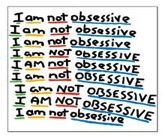Mental Health Awareness Month: Fitness #4Mind4Body
Jill Stoddard
by Annabelle Parr
May is Mental Health Awareness Month. Every year, Mental Health America designates a particular theme for the month to highlight an important aspect of mental health. This year’s theme is Fitness #4Mind4Body, and it focuses on acknowledging the connection between mental and physical wellbeing. #4Mind4Body explores the role of nutrition, exercise, the gut-brain connection, sleep, and stress in our overall wellbeing and examines the ways each of these areas impact our functioning. Below is a summary of the topics covered in the Mental Health Toolkit from Mental Health America.
Diet and Nutrition
Eating a well-balanced, nutritious diet is an integral part of health. Diets high in processed, fried, and sugary foods can increase the risk not only for developing physical health problems like diabetes, heart disease, obesity, and cancer, but are also linked to mental health problems, including increased risk for depression symptoms. A healthy diet consists of a variety of fruits, vegetables, legumes, whole grains, fish, nuts, and olive oil. Maintaining a balanced, nutritious diet is linked with a lower risk for depression and even an improvement in depression symptoms.
Exercise
Regular exercise not only helps control weight, increase strength, and reduce the risk of health problems like high blood pressure, cardiovascular disease, and some cancers, but it also helps boost endorphins and serotonin, among other important proteins and neurotransmitters that impact mental health. Endorphins serve to mitigate pain in the face of stress and increase pleasure in the body. Serotonin affects appetite, sleep, and mood, and is the target of SSRIs, a class of antidepressant commonly used to treat anxiety and depression. Just thirty minutes of exercise per day can help improve mood and mental health.
The Gut-Brain Connection
The gut, also known as the “second brain,” communicates directly with the brain via the vagus nerve and via hormones and neurotransmitters. The communication goes both ways, so anxiety, stress, and depression can impact the gut and result in gastrointestinal symptoms, but changes in the gut microbiome can impact the brain and mood, exacerbating or even resulting in symptoms of anxiety and depression. Eating a nutritious diet that includes prebiotics and probiotics is an important part of maintaining a healthy gut and a healthy mind.
Sleep
Quality of sleep impacts the immune system, metabolism, appetite, the ability to learn and make new memories, and mood. Good sleep for adults means getting between 7-9 hours of mostly uninterrupted sleep per night. Problems with getting good quality sleep can increase the risk of developing mental health symptoms, and symptoms of anxiety and depression can negatively impact sleep, creating a negative cycle. Cognitive Behavioral Therapy for Insomnia (CBT-I) can help clients reestablish healthy sleep patterns through addressing negative thoughts and worries as well as behavioral patterns that are impacting sleep habits.
Stress
Stress is a normal part of life, and the body is equipped with a fight or flight response designed to help mobilize internal resources to manage stressors. After the stress has passed, the body can return to its regular equilibrium state. However, when stress becomes chronic, it can cause inflammation, impaired immune system functioning, muscle aches, gastrointestinal problems, sexual dysfunction, changes in appetite, and increased risk for heart disease. Too much stress can also impact mental health.
Mental health involves a complex interplay between numerous factors, including but certainly not limited to the areas listed above. Furthermore, though maintaining a healthy diet, regular exercise routine, good sleep habits, and utilizing stress management techniques can help prevent or improve existing mental health symptoms, if you are struggling with mental health issues, it can be difficult to attend to these areas.
If you are struggling with anxiety, stress management, depression, chronic illness, or insomnia, seeking professional assistance can be helpful. Evidence based therapies like Cognitive Behavioral Therapy (CBT) and Acceptance and Commitment Therapy (ACT) can help to address problematic thoughts and behaviors that are contributing to emotional distress. Therapy offers a warm, supportive, safe environment to explore painful issues. A therapist can also provide support in helping the client to develop good self-care habits, like those mentioned above.
This year’s mental health awareness theme reminds us of the importance of recognizing the multiple avenues through which we can approach mental health, and the variety of tools we have at our disposal to improve overall wellbeing.
CSAM IS HERE TO HELP
If you or someone you love might benefit from cognitive behavioral therapy (CBT) or acceptance and commitment therapy (ACT) for anxiety, depression, stress, PTSD, insomnia, or chronic illness, or if you would like more information about our therapy services, please contact us at (858) 354-4077 or at info@csamsandiego.com
References
Mental Health America. (2018). 2018 Mental Health Month Toolkit. Retrieved from http://www.mentalhealthamerica.net/sites/default/files/Full_2018_MHM_Toolkit_FINAL.pdf














